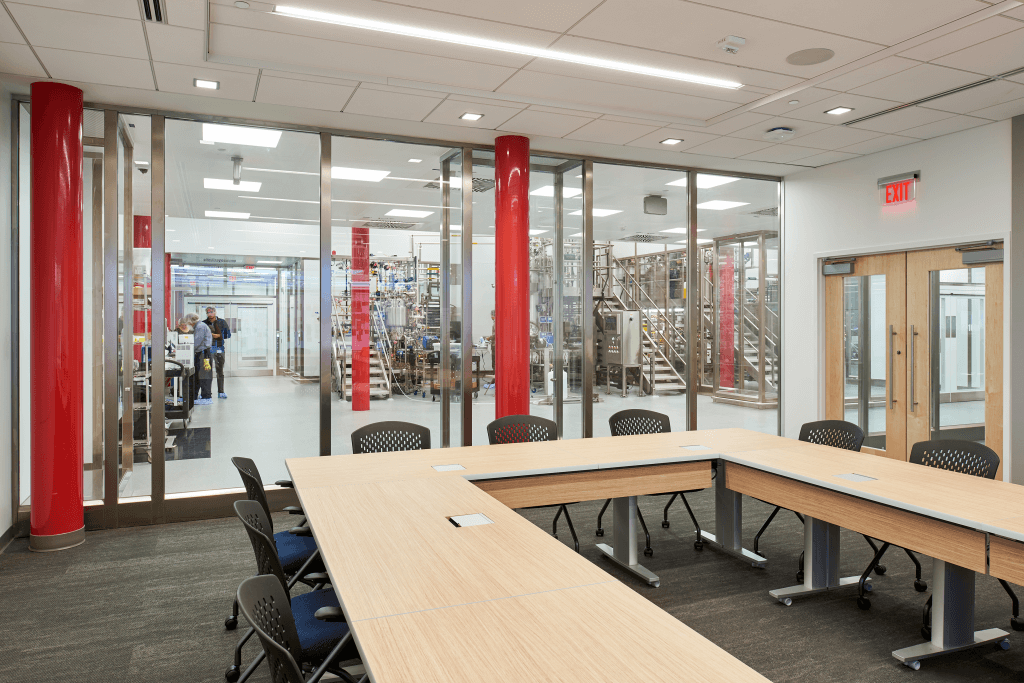Confidential Client
Read More
The highest-performing teams incorporate target value practices across all phases of a project, not just the design phase. The traditional process—target value design—prioritizes design as a cost driver, dictating that designers need to know what they’re building before determining costs. A more progressive approach—target value delivery—makes cost, value and constructability the drivers of the design. This flips the paradigm, meaning we start with the amount a project owner can spend. This is replacing the old way of working, making it possible to deliver a project that’s under budget without sacrificing value. Learn more about target value delivery.
We have all heard the old adage where you have three options; pick two. In our industry, those options usually boil down to cost, schedule and quality. Our clients are often expected to select any two and thereby sacrifice the third.
For this reason, at least in part, project structures and processes, such as Target Value Design (TVD), are becoming popular with owners. In fact, it’s not uncommon for these and other lean construction principles to emerge as contractual requirements.
The focus of TVD is to drive down the cost of a project without reducing the quality of the final product or extending the schedule. TVD aims to achieve this goal by setting cost as a design constraint rather than an outcome of design. Teams set cost targets for design and construction that are usually below the current estimates. These targets are set up as stretch goals to push project teams to innovate new ways of delivering projects—not just to be more efficient in doing things by traditional means.
These steps are typically taken early in the design phase:
- Set the target cost.
- Form TVD teams according to building system and allocate a target cost to each team.
- Evaluate design options against target values before fully developing the options.
- Hold frequent budget alignment sessions; do rapid estimating.
The Cardinal Rule of Target Value Design
The target cost must never be exceeded! For this to be effective or even possible, full buy-in with the team is necessary. When improvements in the design result in increased costs, offsetting savings must be found elsewhere without compromising value. The team must be vigilant and not allow scope that will exceed the target cost to be added to the project.
Things to consider when setting target costs:
Do not set targets arbitrarily
Targets can be set in many different ways, including a percentage reduction to the owner’s allowable cost, as a cost per square foot, a comparison to a similar project or other methods. Pick a target that makes sense for the project and is relevant to the team. Many teams will push back against a target with a large lump sum reduction without some justification to support the reasoning.
Involve the team in setting targets
The more you can involve individual team members in the rationale behind the target, the more buy-in the team will have. Even if the target seems like a stretch, understanding how it was set is the first step in engaging the team to go after the target. Without this belief and understanding in the target, teams can become disconnected and go back to traditional project delivery behaviors.
Set targets that are achievable but not too easy
The target should be a stretch to motivate the team to innovate. If the target is too easy, the team will achieve it by being slightly more efficient, but the culture will not change, and true innovation will not occur. If the target is too aggressive, it may be unobtainable and the team will focus on limiting its risk.
Ultimately, a successful TVD project requires buy-in from all team members. The TVD process is not maintained by just a few members of the team. The process is successful only when the entire team is unified by the goals set early in the project. This creates a culture of commitment and responsibility to reach those goals together.






